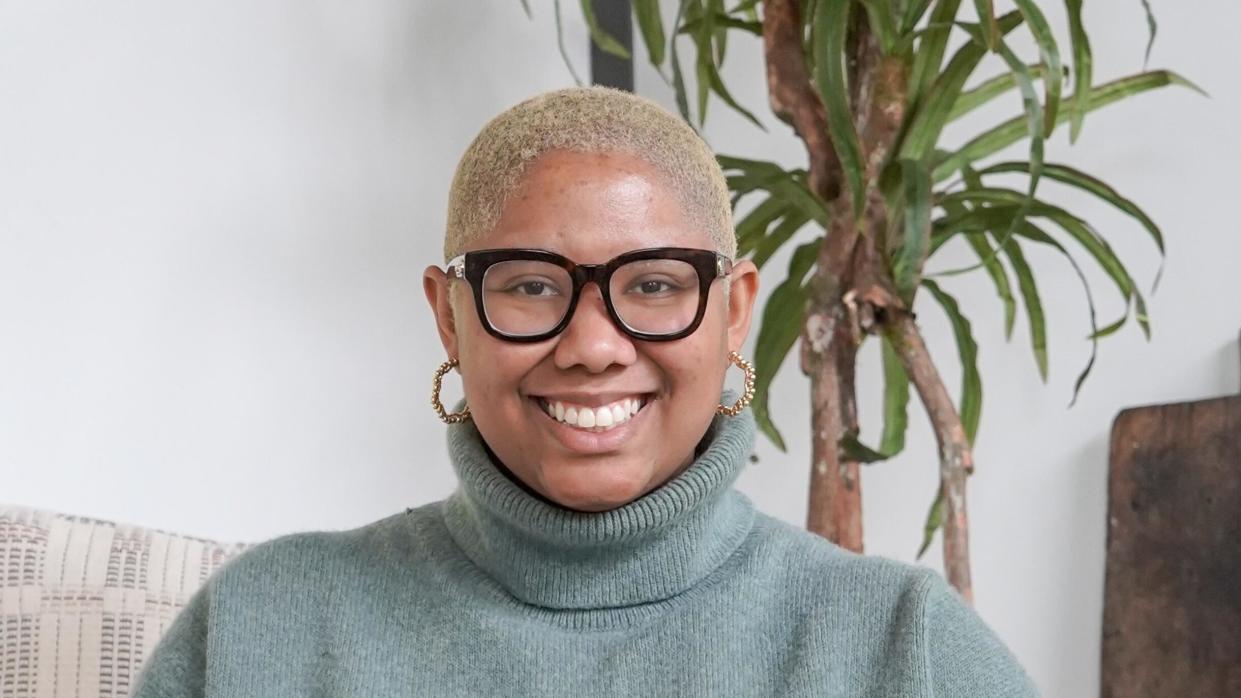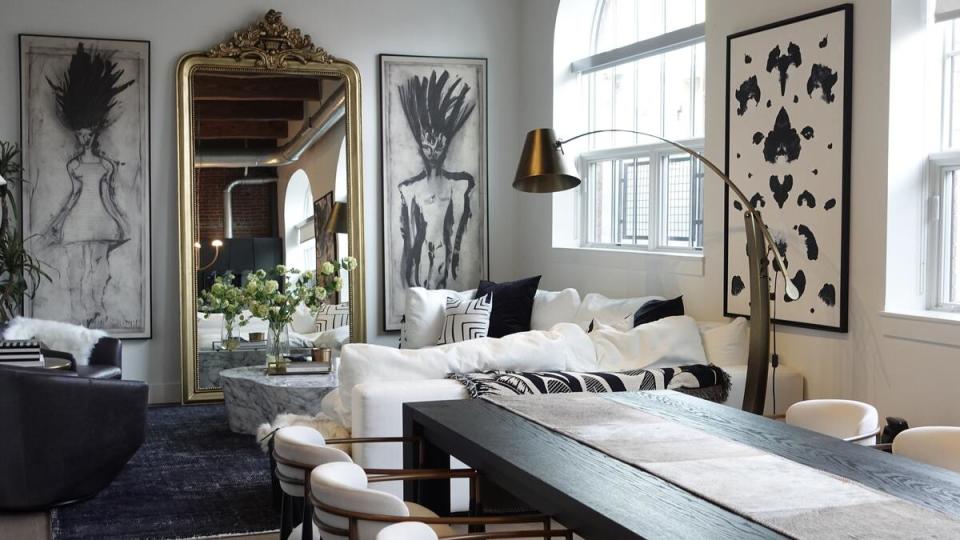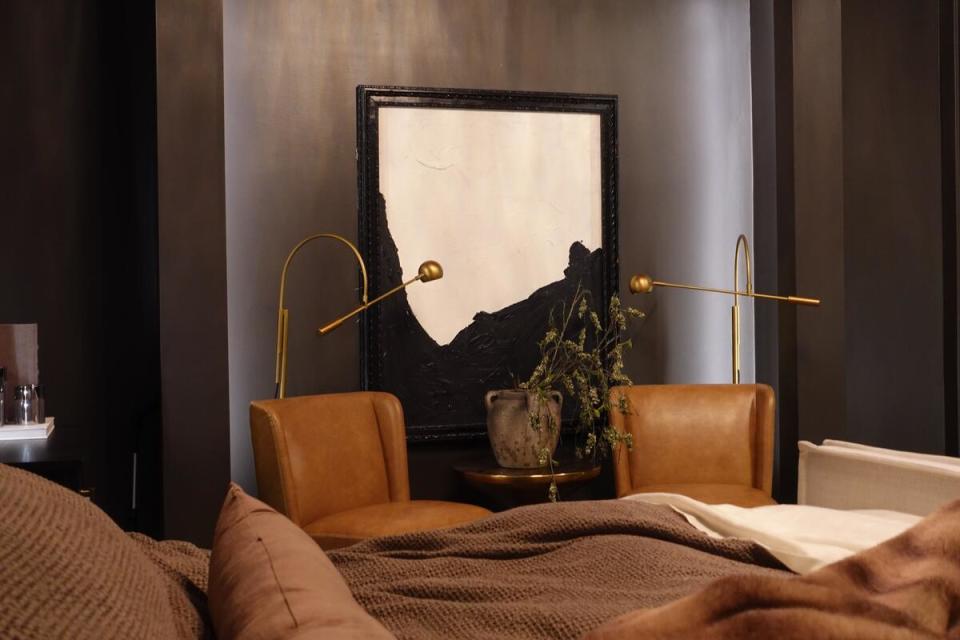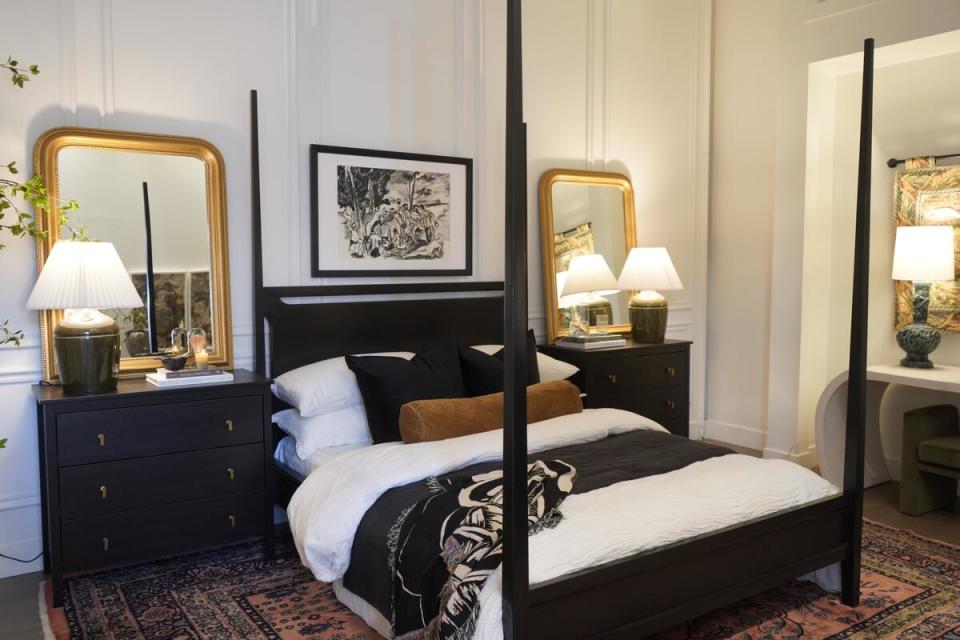How to boost social media engagement without upping your screen time

Social Media | May 1, 2024
In Ask an Influencer, Business of Home explores the creator economy. This week, we spoke with content creator @kivabrent.
Growing up in the home of her grandmother, an artist, Kiva Brent gained entry into the world of design from a young age. Their first project together was a total renovation, taking her grandmother’s home from minimalist to maximalist. “It was an all-white house, and then she decided one day she wanted it to be rainbow—literally,” says Brent. “We started putting mosaics up on the wall and making art together, so I’ve always really lived in a creative space.”
But when it came time for Brent to choose her own career path, the plan was to pursue something more stable—ideally, in the medical profession. She earned her bachelor’s degree in biochemistry and promptly graduated into the uncertainty of the pandemic. Instead of going straight into medical school, she decided to take some extra time to study for the MCAT entrance exams. Meanwhile, her wife’s job took the pair to Pittsburgh, and even supplied the couple with a condo. The only problem: “We couldn’t afford to put anything in it,” says Brent.
While she was drawn to the RH aesthetic, the retailer’s price point was out of reach. “We were dealing with a lot of hand-me-down furniture and stuff like that,” she says. “Obviously, I couldn’t afford one thing in there, so I was like, ‘How can I achieve this look for less?’”

The question turned into countless trips to Ikea and Dollar Tree, which in turn spawned DIY projects that Brent documented on her brand-new YouTube channel. With everyone at home and focused on their interiors more than ever, the channel was quickly monetized—and suddenly, Brent had a new career path on her hands. Before long, she introduced her signature “design audit” video series, in which she accepted photo submissions of followers’ homes, and narrated her suggestions for design improvements. While she’s since ventured into full-service work, the audits have become a keystone of her content strategy, with other streams of revenue making up for the free offering.
“Since I grew up low-income and I know what it’s like to not be able to afford certain things, and I know how powerful feeling at home is, I found that I’d rather do more affiliate marketing and more brand partnerships so I can give as much for free as possible,” says Brent. “That’s just where my heart sits, and I’m fortunate to be able to do that.”
Clearly, it’s a strategy that’s worked for her audience as well, which now numbers 358,000 subscribers on YouTube and 418,000 followers on Instagram. Here, she shares the software that multiplied her affiliate link conversions, her trick for getting viewers to easily engage with her content and why taking a break is sometimes the best way to boost engagement.
A teachable moment
A large part of attracting a following on social media means adapting your content approach to your platform of choice. For Brent, that meant exercising more creative freedom on YouTube, with the assumption that viewers were willing to settle in for a 20- or 30-minute video. But on Instagram, that attention span wasn’t guaranteed—and Brent learned to adapt to capture viewers within a much narrower window of opportunity.
“On Instagram, people want really valuable information in, like, 15 seconds,” she says. “If you’re able to do that, and find value in every single word that you choose, you can be successful.”
Brent’s strategy is to draw viewers in from the first moment her content shows up on their screen, ideally within the first three seconds. “I always start with something—not necessarily inflammatory—but a strong hook. Like, ‘This is what you’re doing wrong,’ or ‘Stop doing this,’ so that you capture someone’s attention,” she says.
After that, Brent moves on to the critique, offering viewers an explanation of how to remedy their design problems. Here, she typically touches on the second part of her strategy: offering viewers a formula they can apply to their own spaces.
“An example would be art size: If your art is above a piece of furniture, it should take up between one half and three-quarters of the [remaining wall] space. So I’d say, like, ‘Multiply the wall width times two-thirds, and the same for the wall height,’” says Brent, “so that people don’t have to sit and stare at the wall and be like, ‘How big should this piece of art be?’ I tell them exactly what the dimensions should be and how to find them, and we’re golden.”
High-low tech tricks
On YouTube, Brent opts for a more sophisticated tech setup: always a digital single-lens reflex (DSLR) camera—the Sony Alpha 73 is her favorite—along with a stand-up studio light and a Rode microphone. “I’m always aiming for at least 16 minutes, and if I can get to 30 minutes, that’s even better,” says Brent. “So it really has to look nice and crisp and clean.”
For Instagram and TikTok content, the setup is much simpler. Most of Brent’s videos utilize the green screen feature (available on both apps), which she films with her iPhone’s front-facing camera.
“I make sure I’m sitting in front of a very neutral background—it has to be a blank wall, or else it will look kind of fuzzy around the edges—and then I have a really good light on me,” she says. She keeps her editing process pretty simple, too: Final Cut Pro for YouTube videos, and InShot for Instagram and TikTok content.

Taking breaks to boost engagement
There was a time when the conventional wisdom for building a following was, simply, more is more. When it came to Instagram Stories, for example, the general consensus seemed to be that a constant stream of content available 24/7 was the ideal approach. According to Brent, those days are behind us.
“Taking a break with 48 hours in between can really help boost engagement on your Stories, and get people a lot more invested in you,” says Brent. If you’re still worried that less content will mean less engagement, she recommends a more streamlined approach to boosting the latter: employing a quick keyword that followers can comment or reply back with if they’d like to see more of a certain type of content—for example, a certain emoji or a word like “shop.”
“I found that more open-ended questions like, ‘Comment your thoughts,’ [don’t work]—people are watching this when they’re sitting on the toilet or at a stoplight; they’re not going to write a full comment,” she says. “Instead, I have quick ways for them to show they’re engaged besides a like, and telling them directly what to do has really helped boost my engagement.”
Beyond that, cutting down on the constant stream of content can help establish boundaries between creators and their audiences. “Honestly, it’s too much access,” she says. “On social media, there’s a very fine line between, ‘We’re BFFs,’ and ‘I’m a stranger on the internet,’ and you have to really walk that line depending upon the type of creator you want to be.”

Keeping up with communication
A surefire way to promote an engaged social media audience is to respond to users in comments and DMs—and Brent does her best to catch every message that comes through. She tries to remain on her phone for at least an hour after posting new content, engaging with each message during that time. Her goal is to read and reply to follower outreach during the whole first week after a post goes live.
Still, she’s not always successful. Her workaround has been to employ a social media engagement software called ManyChat: a paid automated service that scans her comments and DMs for keywords, then automatically sends a preprogrammed message directly to users. Brent uses it to send affiliate links to followers and share information about her design services.
“I have a story in my Highlights where I’m like, ‘If you’re interested in my design services, respond to this story with ‘consultation’ or ‘audit,’ and then it sends them all the details on how to sign up,” says Brent. “Obviously if they have questions, they’ll end up in my primary [inbox] and I’ll engage with them and answer the questions, but it allows me to not spend as much time with the back-and-forth, and that leads to better conversion.”
Want to stay informed? Sign up for our newsletter, which recaps the week’s stories, and get in-depth industry news and analysis each quarter by subscribing to our print magazine. Join BOH Insider for discounts, workshops and access to special events such as the Future of Home conference.

